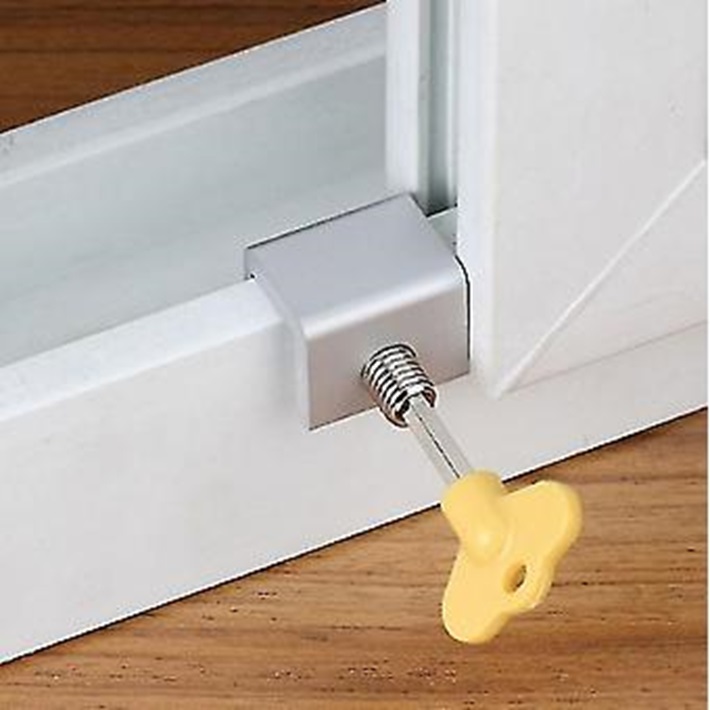Our windows are the main source of natural light and ventilation in our homes, which is why there’s such a great emphasis on keeping them in good condition. One of the most important aspects of maintaining windows is ensuring that they slide smoothly and effortlessly.
A common issue with sliding windows is when they become difficult to open and close, which can be frustrating and even potentially dangerous if emergency exits are blocked. Fortunately, there are several ways to improve their functionality and keep them operating smoothly.
How Can I Improve My Sliding Window?

Depending on the type of sliding window you have, there are different methods for improving its performance. Even so, here are some general tips and techniques that can help enhance the sliding action of your windows:
Replace Locks and Latches
You can never be too careful when it comes to home security, so installing a sturdy and reliable window lock for sliding window setups is an essential step. Most models come with standard locks, but upgrading to a stronger and more advanced option can provide better protection against potential break-ins.
The most common window lock for sliding window setups is the mortice option, which is fitted to the frame and keeps it securely in place. Its mechanism is more robust than standard locks, which adds a layer of protection to your home. It relies on a key to open and close, which makes it more secure than latches that only require a push or pull.
Sliding window latch locks, on the other hand, are typically found on older setups and can be easily replaced with a newer version for increased security. They’re also available in various styles and designs to complement the aesthetic of your windows.
You could also go for double-hung locks, which can accommodate both the top and bottom sashes. These types are often used for older or larger windows and provide better reinforcement against forced entry. Even if you have a secure lock in place, adding latches can further enhance its performance and provide additional peace of mind.
Moreover, doric press models are gaining popularity for their convenience and ease of use. They’re usually placed in the middle of a sliding window and locked by pressing down on the lever. These locks also come with keyed options for added security.
As for sash locks, they’re designed specifically for single-hung windows and are typically placed on the top sash to secure it onto the bottom one. These locks come in different variants such as cam, pin, and barrel options, all of which offer varying levels of security.
It’s essential to consider your window setup and the level of protection you need when choosing a window lock for sliding window setups. Don’t hesitate to consult with a professional if you’re unsure about which type would work best for your home.
Clean and Lubricate the Tracks
As the main point of contact for your sliding windows, the tracks are crucial in keeping them functioning smoothly. Over time, dirt and debris can accumulate in the tracks, causing friction and making it difficult to open or close the window. To prevent this from happening, regularly clean and lubricate the tracks with a silicone-based spray or lubricant.
Start by removing any visible dirt or debris from the tracks using a soft brush or cloth. Then, apply the lubricant on both sides of the track and move the window back and forth to evenly distribute it. This will not only make your window easier to operate but also help prolong its lifespan.
Additionally, check for any dents or damage on the tracks that may affect their functionality. If you notice any, consider getting them repaired or replaced by a professional to ensure smooth and safe operation.
Check Alignment and Balance
Sliding windows rely on a balanced and aligned frame to function correctly. Over time, the constant opening and closing of the window may cause it to become misaligned or unbalanced, resulting in difficulty in operation or even potential safety hazards.
To check the alignment, close the window and observe if there are any gaps between the sash and frame. If you notice any unevenness, use a level to determine which side needs adjustment. You can adjust the rollers or track screws accordingly to realign the window.
For balance, open the window halfway and see if it stays in place or slides down on its own. If it moves downward, adjust the tension on the spring-loaded sash by tightening or loosening the adjustment screws.
Use Weatherstripping
This involves applying a seal along the edges of the window frame to prevent any air or moisture from entering your home. Over time, weatherstripping may become worn out or damaged, compromising its effectiveness.
To ensure that your sliding window is properly sealed, regularly inspect the weatherstripping and replace it if necessary. You can also use caulk or foam insulation to fill in any gaps between the window frame and wall for added protection against drafts and leaks.
Consider Installing Window Film
While blinds and curtains can provide privacy and block out sunlight, they may not be the most effective in keeping your home energy-efficient. Consider installing window film on your sliding windows to reduce heat transfer and block UV rays.
There are various types of window films available, each offering different levels of insulation and protection against harmful UV rays. Choose one that best suits your needs and budget, and follow the manufacturer’s instructions for proper installation.
Regular Cleaning and Maintenance
It is essential to keep your sliding windows clean and well-maintained to ensure their longevity and functionality. Use a mild cleaner or soap solution to clean the tracks, frames, and glass panes regularly. Be gentle when scrubbing or wiping down the window to avoid damaging any mechanisms.



